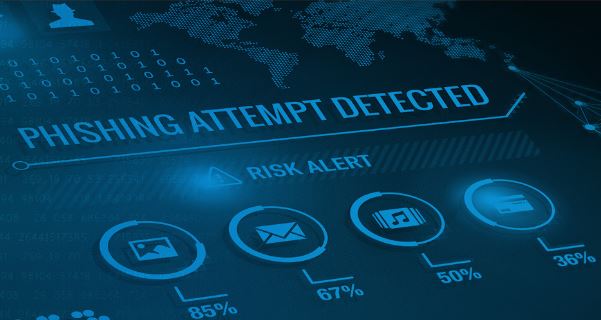How to Build a Strategic IT Budget for Your SMB | Teknologize
Many SMBs don’t actually have an IT budget; they have a list of last year’s expenses. Everything goes into one bucket, and next year’s “budget” is...

Hackers attack every 39 seconds, on average 2,244 times a day. (University of Maryland)
Incidents are cyber events that can include a cyberattack, breach, or compromise that disables your systems and networks.
A security event, according to the National Institute of Standards and Technology (NIST) is “any observable occurrence in a system or network.” Security events don’t always result in breaches but could still threaten the integrity of an organization’s IT infrastructure.
A security incident is a violation of security policies or standard security practices, which results in negative consequences. Incidents can include someone clicking on a phishing link, or a cyber attack that disables your systems and networks.
Why does this matter? An employee receiving an email registers as an event (the email has cleared spam filters and firewalls). If it’s a phishing attack, it doesn’t become an incident until someone clicks! It’s your responsibility to ensure events don’t become more serious.
Incident Response (IR) is the managed approach an organization uses to prepare, detect, contain, and recover from a cyberattack. A cyberattack or data breach can be so damaging, potentially affecting customers, intellectual property, personally identifiable information (PPI), revenue, and ultimately reputation.
Having an incident response plan in place aims to reduce this damage and recover as quickly as possible. Additionally, organizations may discover that their insurance company will not accept their claim if they did not take certain predetermined steps. Immediately contact your insurance company and get direction from them at the very beginning of any IT remediation.
Incident response practices are about preparation—not only establishing an incident response capability so that the organization is ready to respond to incidents, but also preventing incidents by ensuring that systems, networks, and applications are sufficiently secure.
According to the National Institute of Standards and Technology (NIST), there are four key phases of Incident Response:
1. Preparation
To prepare for incidents, compile a list of IT assets such as networks, servers, applications, and endpoints (such as C-level laptops). Then rank them by the level of importance, identifying which ones are critical or hold sensitive data.
Set up monitoring so you have a baseline of normal activity to be used for comparisons later. Determine which types of security events should be investigated and create detailed response steps for common types of incidents. The key to this process is effective training to respond to a breach and documentation to record actions taken for later review.
2. Detection and Analysis
The next phase is to determine if a security incident occurred, its severity, and its type. This is where you go into research mode. Gather everything you can on the incident and analyze it. Determine the entry point and the extent of the breach.
Detection and analysis involve collecting data from IT systems and security tools and identifying precursors and indicators, and then determining if these are part of an attack or if it is a false positive. Precursors and indicators are specific signals that an incident is either about to occur or has already occurred or is happening now. If the indicators prove valid, begin documenting all facts in relation to the incident and all actions taken throughout the process.
3. Containment, Eradication, and Recovery
The goal of the containment phase is to stop the attack before it can cause further damage. This can be accomplished by taking specific sub-networks offline and relying on system backups to maintain operations. Determine what critical services to keep available to customers and employees.
After the incident has been successfully contained, you should act to remove all elements of the incident from the environment. This might include identifying all affected hosts, removing malware, and closing or resetting passwords for breached user accounts.
Finally, once the threat is eradicated, restore systems and recover normal operations as quickly as possible, taking steps to ensure the same assets are not attacked again.
At all times, these processes should be documented, and evidence should be collected. There are two reasons for this: one, to learn from the attack and increase the security team’s expertise, and two, to prepare for potential litigation and a cybersecurity insurance claim.
4. Post-incident Activity
This step provides the opportunity to learn from your experience so you can improve the process and better respond to future security events. Involved team members and partners should meet to discuss specific decisions the team made during the incident, and learn from your experience so you can better respond to future security events. Protecting your organization requires a determined effort to constantly learn and harden your network against malicious actors.
Tempting as it may be to skip, with your never-ending to-do list, this step is strongly recommended.

In short, an incident response plan empowers your organization to develop policies that prioritize the security of your employees, clients, customers, and business associates.
Managed Detection and Response (MDR) purpose is to help companies and organizations improve the way they detect cyber threats, respond to incidents, and continuously monitor their systems and assets in real-time.
MDR is a unique combination of technology and human skills that provide a greater focus on detecting and responding to breaches. The software is important but the most vital part of MDR service is the team of analysts that watch your network 24/7.
Managed Detection and Response (MDR) should include:
In today’s world, it’s critical to reduce the time of detection to hours if not minutes vs days, weeks, and months.
![]() Teknologize is a SOC 2 Type II accredited Managed IT and Cybersecurity provider serving small to mid-sized businesses across Washington and Oregon. We deliver full-service Managed IT Support, Co-Managed IT Support, advanced Cybersecurity Solutions, and IT Compliance Services for regulated industries, including Healthcare, Financial Institutions, the Utilities Sector, Manufacturing, and Professional Services.
Teknologize is a SOC 2 Type II accredited Managed IT and Cybersecurity provider serving small to mid-sized businesses across Washington and Oregon. We deliver full-service Managed IT Support, Co-Managed IT Support, advanced Cybersecurity Solutions, and IT Compliance Services for regulated industries, including Healthcare, Financial Institutions, the Utilities Sector, Manufacturing, and Professional Services.
👉 Book a Discovery Call to see how Teknologize can support your business.
Our Offices
Tri-Cities, Washington – 509.396.6640 | Yakima, Washington – 509.396.6640
Bend, Oregon – 541.848.6072 | Seattle, Washington – 206.743.0981
Questions about your IT or Cybersecurity? Give us a call today!

Many SMBs don’t actually have an IT budget; they have a list of last year’s expenses. Everything goes into one bucket, and next year’s “budget” is...

“When did this happen?”“About a year ago… well, thirteen months, actually.”

Artificial intelligence is everywhere, helping small businesses automate workflows, streamline processes, and boost productivity. But here’s the flip...